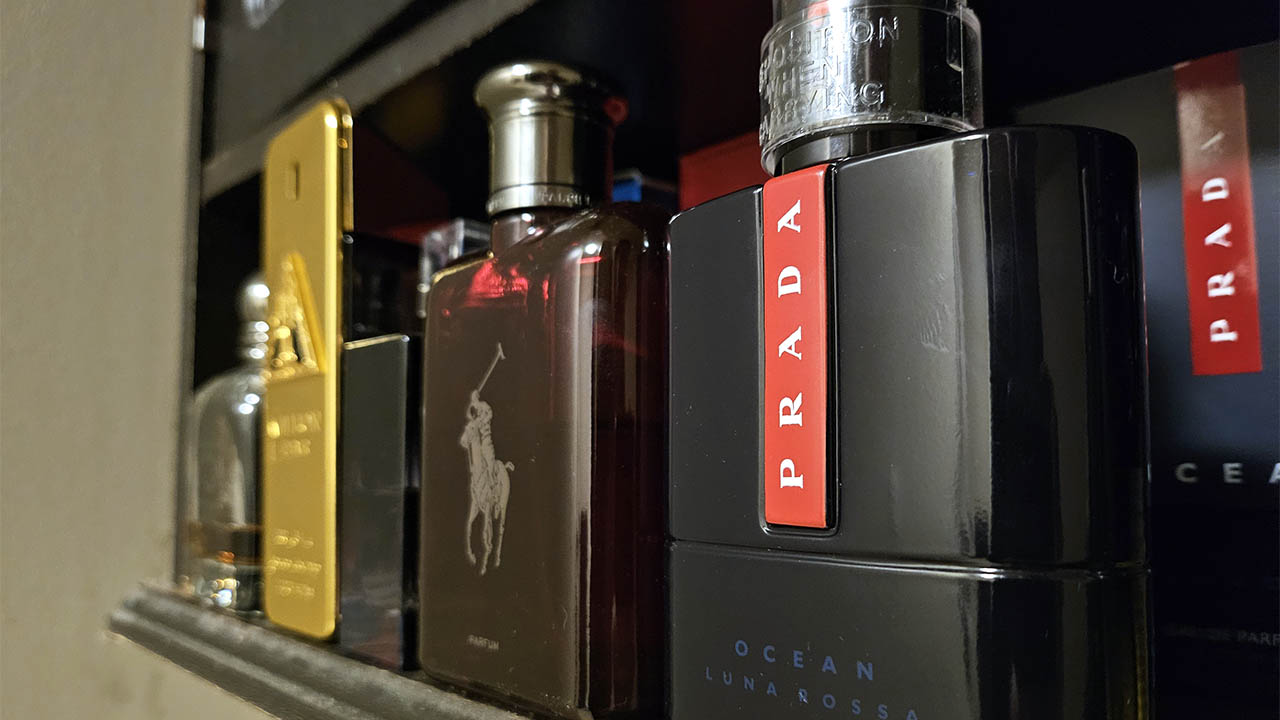Navigating the complex world of fragrances
 CREDIT: JUSTIN KOEHLER
CREDIT: JUSTIN KOEHLERFragrance collections can be tough to get started, but also can become a key part of your fashion footprint.
The fashion industry isn’t short of its areas that are seen as complex, niche, and hard to get into. Watches, purses, sneakers, and more are often seen as areas that sometimes need a bit more information than you’d think to stay up to date with trends and to even just get your foot in the door.
One space that is often attributed to similar aspects, with plenty of different options and price points associated, are fragrances, perfumes, and colognes.
It’s an area of fashion that is often under looked, yet one of the most important in making a good and lasting first impression. People think of visuals like dressing nicely and posture as some of the more important parts of getting people to remember you, but people can even form big opinions of someone based on how they smell.
Like many things in life though, it’s very easy to get wrong, even having a negative effect on how someone perceives you if you use too much.
With that, if you’re wanting to get into the world of fragrances, there are a few key points for you to know.
Immediately, there are different types of colognes and perfumes.
You’ll often hear two different words: niche or designer, essentially indicating the basis of a fragrance’s maker.
Niche fragrances come from companies who solely make them as their main focus. This allows them to focus directly on the scents themselves, being able to experiment with scents and make more tailored options for consumers. It also means they can usually be a bit pricier, usually meant for fragrance experts who will notice the more subtle differences within the scents themselves.
Designer fragrances, however, come from brands who make other things as well. Gucci, Ralph Lauren, and Prada, are a few different companies that make things like clothing and shoes but also have fragrance lines. They’re mass produced, but that doesn’t mean they’re poor scents, often becoming the most popular and most readily available on the market. Usually, this is where 95 per cent of the cologne and perfume communities lie.
Next, there are different types of intensities for every fragrance. You’ll hear the terms “eau de toilette” and “eau de parfum.” This all comes down to the actual amount of concentrated ingredients that make up the fragrance versus alcohol and additives. This will have an effect on the price as well.
If you’re looking for something to last a few hours, eau de toilettes or EDTs are a great way to go. If you’re looking for something stronger to last the entire day, going for an eau de parfum or straight to a parfum is the way to go.
I usually recommend people start off with EDTs to test out fragrances before finding one that they like to move to an EDP or a parfum.
Once you get your foot in the door and are looking to get a collection going, I tell people to focus on either three or five fragrances. For three, have one for cold weather, warm weather, and special occasions or date nights. For five, the only difference is having one for each of the four seasons.
In the spring and summer, you’ll usually want fragrances that are lighter and crisper, having things like lavender, jasmine, bergamot, or lemon as the main notes.
In the fall and winter, you’ll want warmer and sweeter scents that contain more woods, vanilla, and spices.
Most importantly though, once you have a selection of fragrances, is knowing how much to put on. This is where most people mess up. Three to four is the magic number, using slightly more for a weaker scent and slightly less for a stronger one. Once you get into fragrances more frequently, you’ll also become “nose blind,” making it harder to sense how you smell with the fragrances. This often leads people to putting on too much and overpowering the rooms they’re in.
Trust the three to four number.
At the end of the day though, it’s about finding what you like. I usually lean towards sweeter scents, but everyone is different. Once you find what you like, people will start associating you with that scent, becoming almost an accessory for your outfit. Do your research, watch videos, and test out fragrances to find that next addition to your fashion footprint.

















